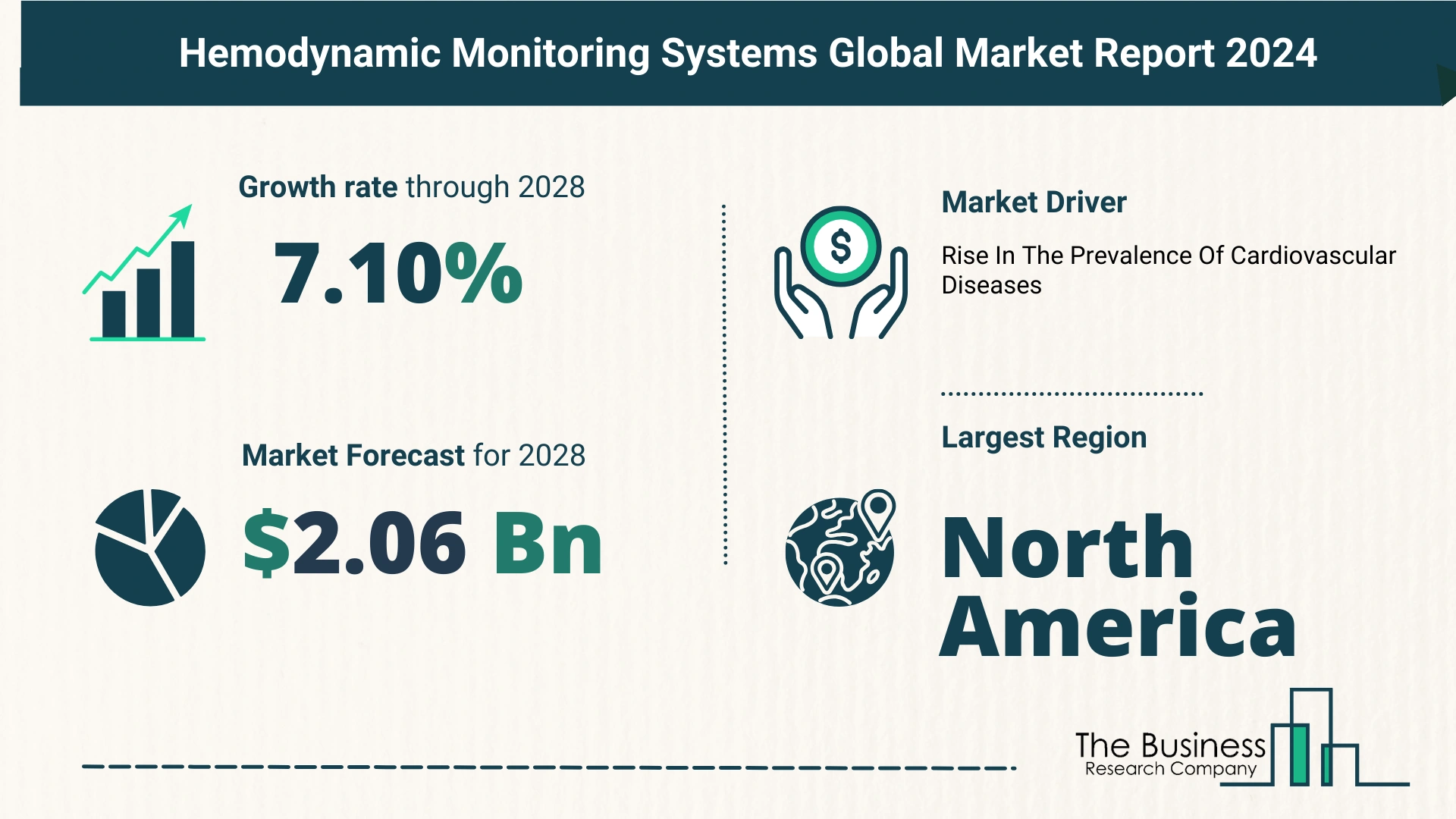Understand How The Hemodynamic Monitoring Systems Market Is Poised To Grow Through 2024-2033
The Business Research Company’s global market reports are now updated with the latest market sizing information for the year 2024 and forecasted to 2033
As per The Business Research Company’s Hemodynamic Monitoring Systems Global Market Report 2024, the hemodynamic monitoring systems market is expected to show significant growth in the forecast period.
The hemodynamic monitoring systems market has experienced robust growth in recent years, with significant projections for the future. Let’s delve into the key drivers and trends shaping this dynamic landscape.
Growth Spurt: Market Overview
- The market size surged from $1.45 billion in 2023 to $1.57 billion in 2024, boasting a compound annual growth rate (CAGR) of 8.2%.
- Projections indicate further expansion, reaching $2.06 billion in 2028 at a CAGR of 7.1%.
- Factors fueling this growth include the prevalence of cardiovascular diseases, aging populations, surgical procedures, and advancements in healthcare infrastructure.
Pumping Up Growth: Key Drivers
Elevated Prevalence Of Cardiovascular Diseases
- Cardiovascular diseases are a leading cause of mortality worldwide.
- Real-time data from hemodynamic monitoring systems aids in timely interventions, optimizing treatment strategies, and enhancing patient outcomes.
- The rising incidence of cardiovascular diseases is a significant driver propelling market growth.
View More On The Hemodynamic Monitoring Systems Market Report 2024 – https://www.thebusinessresearchcompany.com/report/hemodynamic-monitoring-systems-global-market-report
Companies in the Arena: Innovations and Strategies
Advancements In Integrated Hemodynamic Monitoring Systems
- Major players are focusing on innovative products like integrated interventional hemodynamic monitoring systems to drive market growth.
- Integration with portable patient monitors, such as the Intellivue X3, enhances workflow and patient focus during procedures.
- Comprehensive monitoring and support during minimally invasive interventions are provided, improving clinical decision-making.
Masimo Corporation Bolsters Portfolio
- In February 2021, Masimo Corporation acquired LiDCO Group Plc, expanding its hemodynamic monitoring product portfolio.
- LiDCO Group Plc offers non-invasive and minimally invasive hemodynamic monitoring equipment, complementing Masimo’s existing offerings.
Segmentation and Regional Insights
Segment Breakdown
- The market is segmented by product (monitors, consumables), technique type (invasive, non-invasive), and end-user (hospitals, cath labs, other end-users).
Regional Dominance
- North America emerged as the largest region in the hemodynamic monitoring systems market in 2023, highlighting the region’s pivotal role in driving market growth.
Future Perspectives: Trends to Watch
- Application of artificial intelligence (AI) and machine learning (ML) in hemodynamic monitoring.
- Integration with remote monitoring and telehealth solutions for enhanced patient care.
- Expansion of hemodynamic monitoring in critical care settings.
- Collaborations for technological advancements and emphasis on data security and patient privacy.
In conclusion, the hemodynamic monitoring systems market is poised for significant expansion driven by evolving healthcare needs, technological innovations, and a growing emphasis on patient care and safety. With companies investing in cutting-edge solutions and partnerships, the future of hemodynamic monitoring looks promising.
Request A Sample Of The Global Hemodynamic Monitoring Systems Market Report 2024:
https://www.thebusinessresearchcompany.com/sample_request?id=13152&type=smp



